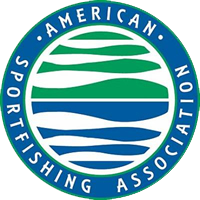Fish habitat at Artificial Reef L also improved with 1,000 pounds of concrete culvert.
Two retired 72-foot subway cars and 1,000 tons of discarded concrete culvert pipe are the latest additions to Georgia’s marine artificial reefs.
The state Department of Natural Resources (DNR) and the Metropolitan Atlanta Rapid Transit Authority (MARTA) partnered to deploy the railcars to Artificial Reef L in about 60 feet of water approximately 23 nautical miles east of Ossabaw Island on Thursday, Dec. 21. (GPS coordinates of railcars and concrete: 31.74987, -80.60919)
“This project has been a long time in the works, and we are so glad to have these MARTA cars offshore now to provide essential fish habitat, diving opportunities, and another great offshore fishing location,” said Cameron Brinton, a marine biologist with DNR’s Coastal Resources Division, which oversees artificial reef creation on Georgia’s coast.
The railcars were retired in July 2022, and MARTA’s Board of Directors voted this past summer to donate them to DNR. The railcars were stripped of hazardous materials and potential contaminants before inspection and approval for reefing by the U.S. Coast Guard. While the remains of the railcars are man-made, the reef that will form on the structures is entirely natural, Brinton said.
“Within a few months to a year, we expect corals, sponges, and other encrusting organisms to form on the railcars,” Brinton said. “The relief and structure of the cars will provide a habitat for fish to spawn and find refuge, which can be sparse off Georgia’s coast due to the low-sloping, sandy geology of the near and offshore undersea environment.”
Brinton said he expects the reef to attract popular sportfish species including snapper-grouper species, cobia, triggerfish, king and Spanish mackerel, sheepshead, and others. The new reef additions are also available to scuba divers immediately.
Thomas Worthy, chairman of the MARTA Board of Directors, toured the railcars in Savannah this week before their departure and end-of-the-line trip to Artificial Reef L.
“This seemed like a real, tangible thing we could do to promote sustainability and exhibit our dedication to sustainability in a statewide platform,” he said. “I think it’s fantastic. It’s evidence of government working together … this method (of railcar disposal) is ideal for us, because not only does it allow us to get rid of old rolling stock and make way for the new, exciting railcars that the citizens of the Atlanta area can look forward to next year, but it also gives us the ability to take care of coastal resources for future generations of Georgians.”
The railcars were deployed alongside 1,000 tons of discarded concrete culvert pipe donated by the construction firm Concrete Pipe & Precast of Charleston, S.C., and 200 tons of concrete power poles donated by Georgia Power. East Coast Terminal Co. in Savannah volunteered to stage the materials and railcars at its facility on the Savannah River.


Concrete materials are added to Artificial Reef L.
Doug Haymans, director of Coastal Resources Division, thanked all those involved who donated time, space, support, and materials to make the deployment happen.
“From the members of MARTA’s Board of Directors, to East Coast Terminal allowing us to take up their valuable space with concrete pipe and subway cars, I thank you for your support,” he said. “The commitment to conservation displayed by all the parties involved in this important task shows Georgia is a state that cares deeply about its natural resources, and the future generations who will enjoy them.”
The railcars and rubble deployed Thursday to Artificial Reef L join U.S. Army M-60 battle tanks deployed in 1995, tugboats, including the 55-foot Delta Diamond deployed in 1988, and barges like a 110-foot one deployed in 1977. Artificial Reef L is a two-by-two mile square with water depths varying between 55 and 65 feet. Coordinates to it and other marine reefs can be found at CoastalGaDNR.org/HERU.
Artificial Reef L was created in 1976 as part of a Coastal Resources Division-created network of 32 offshore reefs. Reef creation on Georgia’s coast began under DNR’s predecessor agency, the Game and Fish Commission, in 1970, and today includes 460 individual deployment sites inside the 32 reefs. For comparison, the areas off Georgia’s coast holding reef materials deployed during the past 54 years equals slightly more than 520 football fields, when including the end zones.
This is not the first time subway cars have been placed at offshore artificial reefs in Georgia. The New York City Metropolitan Transportation Authority donated retired subway cars to the Coastal Resources Division in the early 2000s. The cars were placed at reefs CCA-JL, JY, DRH, and HLHA.
Coastal Resources Division used funds from the sale of its “Support Fish Habitat” license plate to pay for the cost of barging the materials from Savannah to Artificial Reef L. Since its launch in 2017, this specialty license plate featuring the state saltwater game fish, the red drum (Sciaenops ocellatus) on an oyster reef, has raised more than $1 million to create new and improved marine reef habitats. The public can show their support by purchasing this license plate at their county tag offices for just $25 more. Ask for the “Marine Habitat” plate, or plate code “NR.” Learn more at DriveGeorgiaWild.com.










